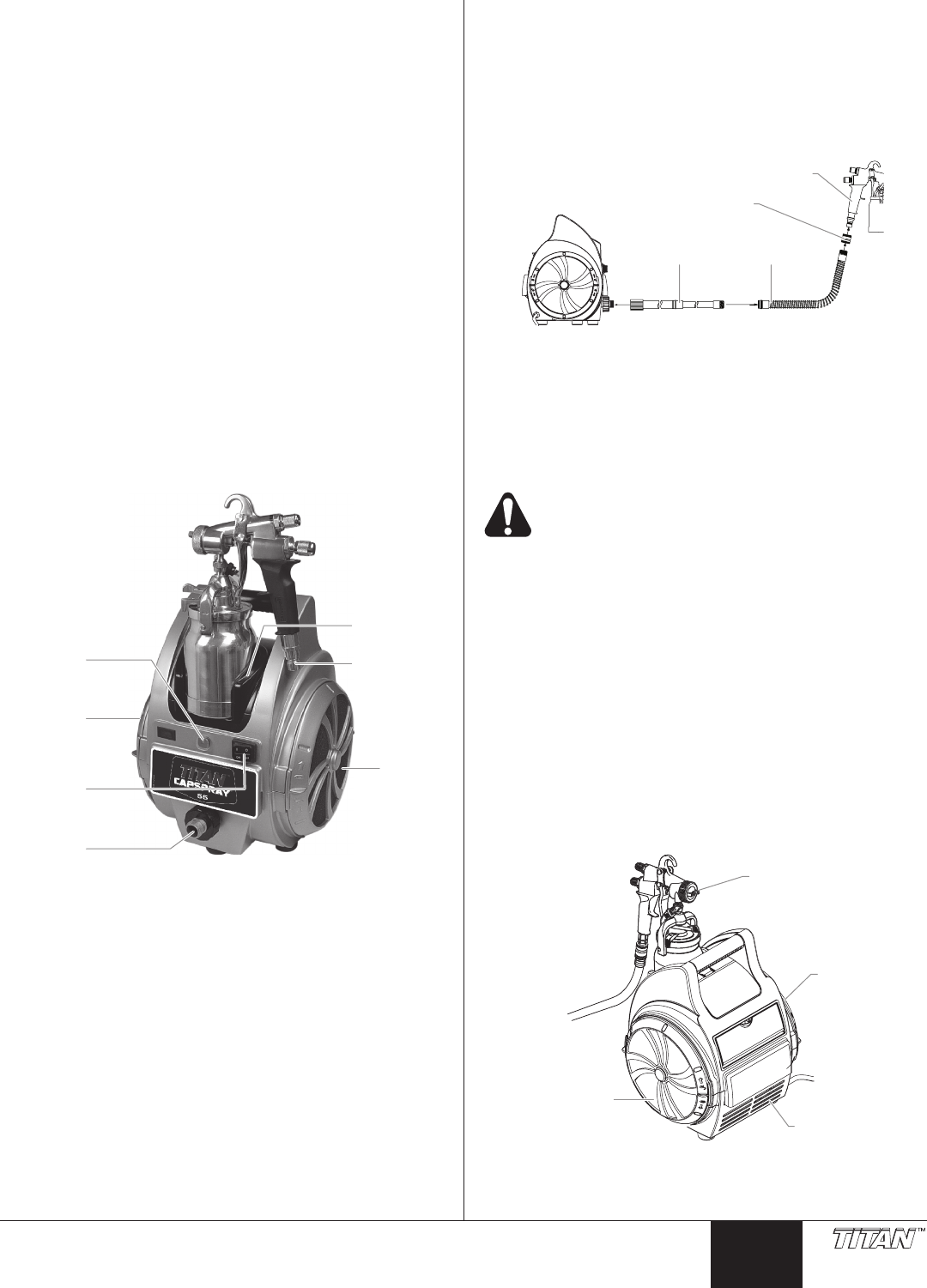
© Titan Tool Inc. All rights reserved. 3
English
Table of Contents
Safety ......................................................................................... 2
Grounding Instructions........................................................... 2
Service ....................................................................................... 2
Introduction ............................................................................... 3
Using an HVLP Spray System ................................................. 3
Setup ..................................................................................... 3
Dual Filtration System............................................................ 3
Maintenance .............................................................................. 4
Cleaning/Replacing Filters ..................................................... 4
Cleaning the Air Hoses .......................................................... 4
Troubleshooting ....................................................................... 5
Product Registration ................................................................ 5
Français ..................................................................................... 6
Español.................................................................................... 10
Parts List ............................................................................ 14-17
Wiring Diagram ....................................................................... 18
Warranty .................................................................................. 20
Introduction
This High Volume/Low Pressure (HVLP) spray system is
designed for applying coatings to surfaces that can be sprayed
faster than brushing or rolling and are too small for traditional
airless sprayers. Components of this system include a power
switch, a power cord, a circuit breaker switch, a dual ltration
system, a cup holder, an air hose, and an air outlet.
The turbine is also equipped with a tool box. It is located on the
reverse side of the turbine and can be used to store projector
sets or any other small spare parts.
*Air hose not pictured
Air inlet
Filter
Cup holder
Air outlet
Filter
(in end of
filter can)
Power
switch
Circuit
breaker
switch
With this HVLP spray system, you can achieve the highest quality
professional nish possible with little or no preparation or setup
time. Please review all the information contained in this manual
before operating the system.
Using an HVLP Spray System
Refer to the following information to operate and understand your
HVLP spray system.
Your system may include a short air (“whip”) hose. The
short hose should be connected to the longer hose or a
remote spraying system (sold separately) and NOT directly
to the turbine. See your spray gun instruction manual for
complete instructions.
Turbine
Air hose
Coupling
Whip hose
Spray gun
IMPORTANT: Do not attach the short air whip hose directly
to the turbine, as the hose will become damaged.
Setup
Use the following procedure to set up your HVLP spray system
for operation.
1. Plug the turbine power cord into a grounded, 3-slot
receptacle.
Keep the turbine at the maximum possible distance
from the spray area to safeguard against explosion
or fire that may be caused by sparking electrical
parts.
2. Prepare your spray gun for operation. Refer to your spray
gun manual for material preparation, setup, and spraying
information.
3. Attach the air hose to the air outlet on the turbine.
4. Attach the air hose to the air inlet on your spray gun.
5. Turn on the turbine and begin spraying.
Dual Filtration System
The turbine has two different air lters— one for atomizing air
and one for cooling air. Both of the lters are ne mesh lters
designed to trap particles that may damage your nish and/
or impede turbine cooling. The atomizing air is discharged
through the nozzle of the spray gun where it atomizes the coating
material. The cooling air lter is designed to allow the proper
amount of air ow through the turbine for cooling purposes.
Cooling air is exhausted through the cooling air discharge on th
back of the turbine.
Cooling air
discharge
Cooling air
intake
Atomizing air
intake
Rear of turbine
Atomizing air
discharge
IMPORTANT: Clean filters regularly. Clogged filters can
cause excessive heat and possibly damage the turbine.
